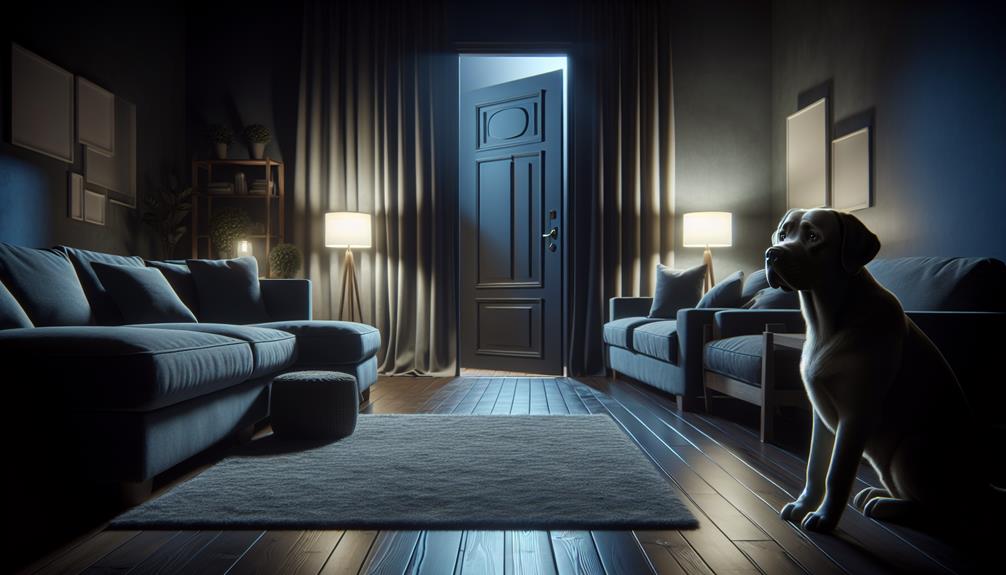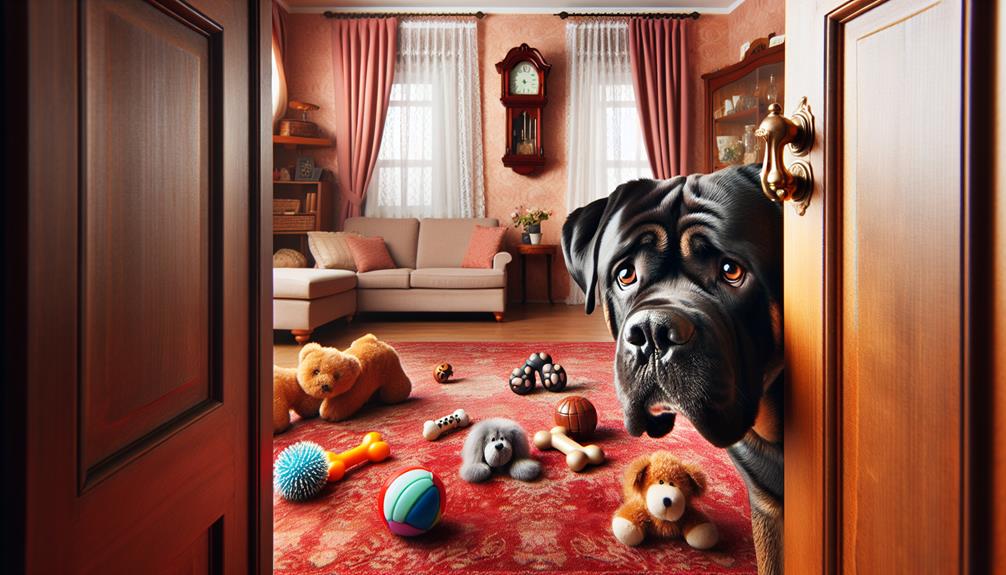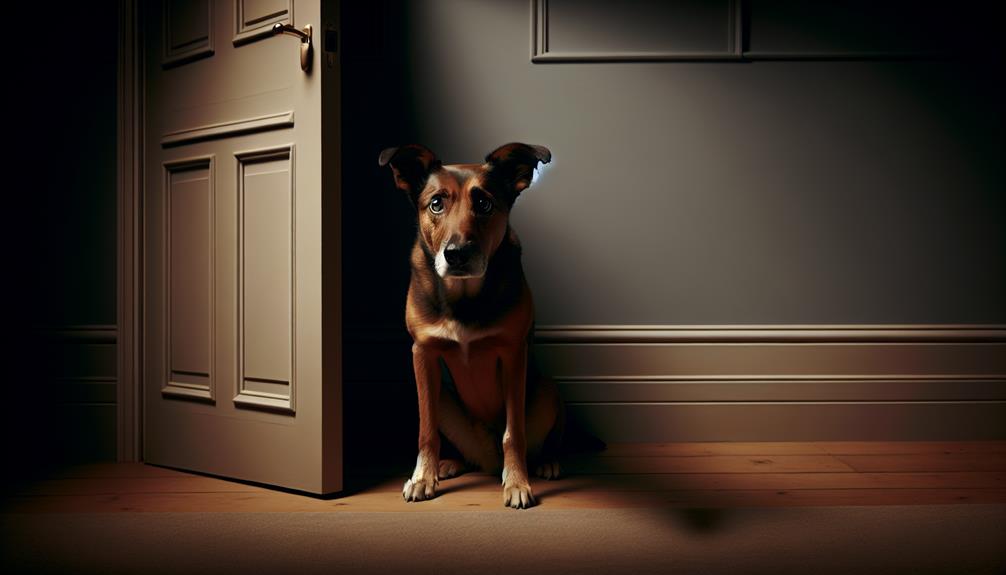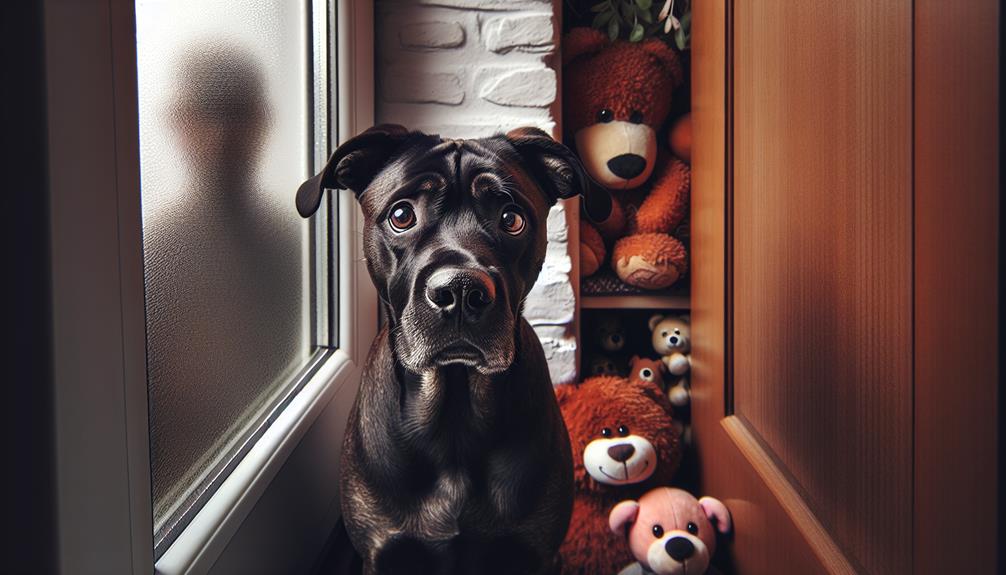Understanding the reasons behind your Porter dog’s tendency to cry when you are in a different room is vital for fostering a harmonious relationship. This behavior often stems from a deep-seated attachment and potential feelings of insecurity, which can manifest as vocal distress. Factors such as past experiences and environmental changes may further exacerbate this anxiety. Addressing these emotional cues is essential, yet many owners remain unaware of the effective strategies that can alleviate their pet’s discomfort. Exploring these dynamics could shed light on how to best support your canine companion in overcoming this challenge. Discover the emotional triggers behind your Porter dog’s crying when you’re away—what could be the underlying cause of this distress?
Key Takeaways
- Porter dogs cry when separated due to strong attachment to their owners, leading to feelings of insecurity and distress.
- Their vocalizations serve as a plea for attention, indicating discomfort when left alone.
- Environmental changes, such as moving or absence of family members, can trigger separation anxiety.
- Lack of socialization may hinder their ability to cope with being alone, intensifying crying behavior.
- They may also exhibit other stress signals like pacing or panting, reflecting unease in solitude.
Why Does My Porter Dog Cry When I’m in a Different Room?

Understanding why your Porter dog cries when you are in a different room involves recognizing their innate social nature and the potential for separation anxiety that can arise in such situations.
These dogs often form strong attachments to their owners, and when left alone, they may experience emotional distress. This distress manifests through vocalization, which serves as a communication method, signaling their discomfort.
Porter dogs are keenly aware of their surroundings and can pick up on subtle cues that indicate their owner’s absence. The crying may be a reflection of attachment issues, where the dog feels insecure without their human companion nearby. Additionally, they may display other stress signals, such as pacing or panting, further indicating their unease.
It’s essential to understand that this behavior stems from a deep-seated need for companionship. As a pet owner, you might feel torn between your dog’s emotional needs and your desire for freedom.
Finding a balance, such as gradual desensitization to alone time or providing engaging distractions, can help ease your Porter dog’s anxiety, ultimately fostering a more harmonious relationship.
What are the Common Reasons for Separation Anxiety in Porter Dogs?

Separation anxiety in Porter dogs can arise from a variety of factors, including changes in their environment, lack of socialization, or past experiences of abandonment. Understanding these underlying causes is essential for addressing the distress that manifests as crying.
Common reasons for separation anxiety in Porter dogs include:
- Environmental triggers: Sudden changes, such as moving to a new home or the absence of a family member, can cause significant stress.
- Lack of socialization: Insufficient exposure to different people, pets, and surroundings may hinder their ability to cope with solitude.
- Past experiences: Dogs that have previously faced abandonment or neglect may develop heightened anxiety when left alone.
To help alleviate their distress, observing your Porter dog’s behavior can reveal their unique needs.
Incorporating comfort objects and employing effective training strategies can foster a sense of security.
In addition, enhancing canine communication through positive reinforcement and gradual acclimatization can empower your dog, creating a more relaxed environment.
How Can I Help My Porter Dog Overcome Crying When alone?

To help your Porter dog overcome crying when left alone, it is essential to implement a combination of gradual desensitization techniques and positive reinforcement strategies that foster a sense of security and independence.
Begin by creating a safe and comfortable space for your dog, filled with their favorite toys and bedding. This designated area should be familiar and inviting, reinforcing a sense of belonging while you are absent.
Start with short separations, gradually increasing the duration as your dog becomes more accustomed to your absence. During these initial phases, remain calm and avoid dramatic farewells, as this can heighten anxiety. Instead, engage your dog with interactive toys or puzzles that stimulate their mind and keep them occupied.
Incorporate positive reinforcement by rewarding calm behavior with treats and praise when you return. This approach builds a positive association with your absence.
Additionally, consider employing calming aids like pheromone diffusers or anxiety wraps, which can ease their stress.
Be patient and consistent in your efforts. Over time, your Porter dog will gain confidence and learn that being alone is a natural part of life, ultimately reducing their need to cry.
What are the Signs of Distress in Porter Dogs When Left Alone?

Recognizing the signs of distress in Porter dogs when left alone is essential for addressing their emotional needs and ensuring their well-being. These dogs, known for their affectionate nature, can experience anxiety in solitude, leading to various distress signals.
Common signs of distress in Porter dogs include:
- Excessive barking or howling: Vocalizations can escalate as a plea for attention, signaling discomfort.
- Destructive behavior: Chewing furniture or scratching doors may reflect their frustration and desire to escape isolation.
- Pacing or restlessness: Constant movement indicates unease, as they search for comfort and companionship.
Being attuned to these behaviors allows you to respond effectively and create an environment that fosters security and tranquility.
Observing your Porter dog can provide valuable insights into their emotional state; understanding their needs can ease their anxiety and promote a sense of freedom within your home.
While independence is a natural desire, the emotional connection with their human companions is crucial for their overall happiness.
Addressing these signs with empathy and awareness is the first step toward nurturing a balanced relationship, ensuring your Porter dog feels secure even when you are not present.
What Training Techniques Can Reduce My Porter Dog’s Crying Behavior?

Implementing effective training techniques can greatly reduce crying behavior in Porter dogs, fostering a more peaceful environment for both the pet and their owner.
To begin, establishing a consistent routine can provide a sense of security, helping your dog understand when to expect your presence. Gradually introducing short periods of separation can teach your dog that being apart is temporary and safe.
Utilizing positive reinforcement is vital; reward your Porter dog with treats or praise for calm behavior when left alone. This encourages them to associate solitude with positive outcomes.
Additionally, creating a comfortable space with familiar toys and scents can alleviate anxiety, making the environment feel more inviting. Incorporating distractions, such as puzzle toys or soothing music, can also help redirect attention away from your absence.
Training sessions focused on commands like “stay” and “settle” can further empower your dog to remain calm in your absence.
Lastly, patience is essential. Remember, change takes time, and your understanding will facilitate the process. By employing these techniques, you can foster independence in your Porter dog, enhancing both their well-being and your shared quality of life.
Finally to mention,
To sum up, understanding the emotional landscape of Porter dogs is crucial for fostering a secure environment.
Much like a lighthouse guiding ships through turbulent waters, consistent training and comfort can help navigate the anxieties that lead to vocal distress.
By addressing the underlying causes of separation anxiety and employing effective strategies, owners can cultivate a sense of safety and companionship.
This ultimately leads to a harmonious relationship, allowing both dog and owner to thrive together.



